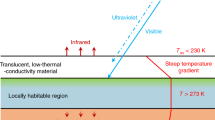Abstract
“It suddenly struck me that that tiny pea, pretty and blue, was the Earth. I put up my thumb and shut one eye, and my thumb blotted out the planet Earth. I didn’t feel like a giant. I felt very, very small”. When astronaut Neil Armstrong said those words on his experience setting foot on the moon, he acted strictly as a visual artist: shutting one eye and attempting to measure the Earth in front of him. And he perceived the scaling of the giant planet as a tiny pea. If Cosmos will be the muse of the future, what are the dimensions of Space Beauty? Why, on Earth, do we prefer massive artworks/totems and we underestimate miniatures? What could be the relations between climax (the Greek word for scale and ladder) and climate change? In this paper the author will attempt to answer these questions presenting the allegories and symbolisms of two of his artworks, Skymarket and Ephebos Head. The author’s research and artworks are all about the nanomaterial silica aerogel an ethereal (im)material resembling our sky. Living and realizing his research in three different countries/climates the last 4 years, he has initiated collaborative interdisciplinary research with MIT’s Department of Earth, Atmospheric and Planetary Sciences on possibilities to imitate moving micro clouds inside the diaphanous body of his sculptures made of the space nanotechnology silica aerogel. The creative venture of this interdisciplinary research also has technological applications as it could drive to a scientific visualisation on bio-mimicry of microclimatic experimentations on greenhouse and climate change phenomena.
Graphical Abstract












Similar content being viewed by others
References
Chuska J (2000) Aristotle’s best regime: A reading of Aristotle’s politics, VII.1-10. University Press of America, Lanham, Md.
Kluger J (2013) Earthrise on christmas eve: The picture that changed the world, http://science.time.com/2013/12/24/earthrise-on-christmas-eve-the-picture-that-changed-the-world/, Accessed 2 July 2016
Kandinsky W (1977) Concerning the spiritual in art. Dover Publications Inc, New York, NY
Michaloudis I, Seats M (2014) Etherospermia: Conceptual art, science and allegory in the sky-seeding project. Acta Astronautica 104:61–70
Armstrong N (1969) http://www.nmspacemuseum.org/halloffame/detail.php?id=1. Accessed 5 May 2016
Editors of Phaidon (2007) 30000 years of art: The story of human creativity across time and space. New York; London, Phaidon
Hoffman H (1967) The search for the real in the visual arts. In: Weeks ST, Hayes BH (eds) Search for the real: and other essays. The MIT, Cambridge, London
Martinez J, Vickers A (2015) The pearl frontier. Honolulu. The University of Hawaii Press, p 30
Donkin RA (1998) Beyond price: Pearls and pearl-fishing: Origins to the age of discoveries. American Philosophical Society, Philadelphia
Katutani M (1991) Books of the Times; Iris Murdoch Defends Art against Plato, The New York Times (May 21, 1991)
Briggs J (1992) Fractals: The patterns of chaos, Vermont, Echo Point Books and Media
Arnhardt L (2016) Political questions: Political philosophy from Plato to Pinker. Waveland Press, Long Grove, IL
Tosa N (2013) http://www.naokotosa.com/2013/10/1121/, Accessed 20 Aug 2016
Briggs J (1992) Fractals: The patterns of chaos, Vermont, Echo Point Books and Media, p 30
Michaloudis I, Green M (2012) Sky cloning project: Working with the ethereal beauty of the space nanomaterial, silica aerogel, Thesis collection of the 3rd art and science international symposium. China Building industry Press, Beijing, China, pp 73–84
Acknowledgements
The authors would like to thank Charles Darwin University Foundation for their support to this research project.
Author information
Authors and Affiliations
Corresponding author
Appendix
Appendix
The silica aerogel sculptures described here are created through a supercritical methanol drying and their density is 0.12 mg/cc. The alcogel is poured into the metallic moulds or glass vials and after gelation and successful drying we’ll have a sculpture with ± 0% shrinkage in its initial mould volume Recipes and formulas are authors trade secrets and are only used for artistic creations.
Rights and permissions
About this article
Cite this article
Michaloudis, I., Dann, B. Aer( )sculpture: Inventing skies and micro-clouds into diaphanous sculptures made of the space technology nanomaterial silica aerogel. J Sol-Gel Sci Technol 84, 535–542 (2017). https://doi.org/10.1007/s10971-017-4370-7
Received:
Accepted:
Published:
Issue Date:
DOI: https://doi.org/10.1007/s10971-017-4370-7




